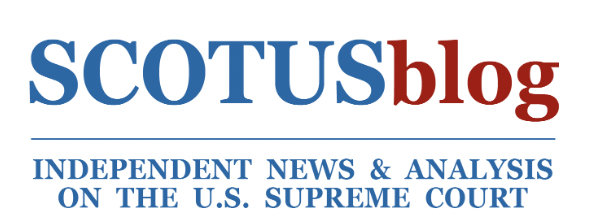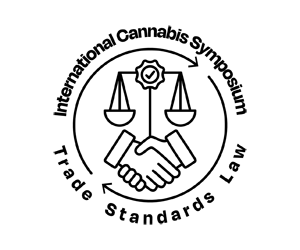* Apologies in advance, there are a few little zoom audio dropouts in this conversation.
In this emergency episode of the Karma Koala podcast we speak to Leah what the possible consequences of the ruling are . Both for the cannabis and hemp sectors in the usa.
Could it spell the end of schedule 3 ?,
Who benefits and who doesn’t?
and
Why apex cannabis companies, some of whom are currently implacably opposed to hemp derivatives, may soon be pivoting. Curaleaf are already ahead of the game on this one.
Curaleaf Launches Hemp-Derived Product Line, Direct-to-Consumer E-commerce Marketplace
First
The ruling and some commentary
22-451_7m58 (1)PBS
July 1, 2024
Chevron Overturned: What Does It Mean for Life Sciences Companies?
On June 28, 2024, the Supreme Court issued a 6-3 opinion in the combined cases of Loper Bright Enterprises v. Raimondo and Relentless, Inc. v. Department of Commerce, overturning the seminal 40-year-old decision Chevron v. Natural Resources Defense Council that established the principle that federal courts must defer to an agency’s reasonable interpretation of a statute when it is ambiguous — known as Chevron deference. As discussed below, this case has potentially far-reaching consequences for the life sciences industry.
Background: What Was Chevron?
For decades, federal courts have used Chevron deference to resolve issues of statutory interpretation. Under Chevron deference, when a court was reviewing an agency’s interpretation of a statutory provision, courts were directed to follow a two-step analysis.
Under step one, a court first determined whether a statute was ambiguous, i.e., “whether Congress has directly spoken to the precise question at issue.” If so, the court “must give effect to [such] unambiguously expressed intent.” If the statute was ambiguous after exhausting all tools of statutory interpretation, the court proceeded to step two.
Under step two, the court assessed whether the agency’s interpretation of the statute was reasonable. Courts were directed to defer to the agency’s interpretation of the statute if it represented a “permissible construction of the statute.” The court later narrowed the scope of Chevron deference to encompass only agency interpretations reached through formal proceedings with the force of law (e.g., notice-and-comment rulemaking or adjudications).
Chevron has been cited more than 19,000 times, making it the third-most cited civil case ever. Of particular note for Arnold & Porter’s Food and Drug Administration (FDA)-regulated clients, Chevron was often cited in decisions upholding statutory interpretations of the Federal Food, Drug, and Cosmetic Act advanced by FDA in agency rulemaking.
Second.
What Scotus Blog is saying
Supreme Court strikes down Chevron, curtailing power of federal agencies
OPINION ANALYSIS
Supreme Court strikes down Chevron, curtailing power of federal agencies

This article was updated on June 28 at 3:46 p.m.
In a major ruling, the Supreme Court on Friday cut back sharply on the power of federal agencies to interpret the laws they administer and ruled that courts should rely on their own interpretion of ambiguous laws. The decision will likely have far-reaching effects across the country, from environmental regulation to healthcare costs.
By a vote of 6-3, the justices overruled their landmark 1984 decision in Chevron v. Natural Resources Defense Council, which gave rise to the doctrine known as the Chevron doctrine. Under that doctrine, if Congress has not directly addressed the question at the center of a dispute, a court was required to uphold the agency’s interpretation of the statute as long as it was reasonable. But in a 35-page ruling by Chief Justice John Roberts, the justices rejected that doctrine, calling it “fundamentally misguided.”
Justice Elena Kagan dissented, in an opinion joined by Justices Sonia Sotomayor and Ketanji Brown Jackson. Kagan predicted that Friday’s ruling “will cause a massive shock to the legal system.”
When the Supreme Court first issued its decision in the Chevron case more than 40 years ago, the decision was not necessarily regarded as a particularly consequential one. But in the years since then, it became one of the most important rulings on federal administrative law, cited by federal courts more than 18,000 times.
Although the Chevron decision – which upheld the Reagan-era Environmental Protection Agency’s interpretation of the Clean Air Act that eased regulation of emissions – was generally hailed by conservatives at the time, the ruling eventually became a target for those seeking to curtail the administrative state, who argued that courts, rather than federal agencies, should say what the law means. The justices had rebuffed earlier requests (including by one of the same lawyers who argued one of the cases here) to consider overruling Chevron before they agreed last year to take up a pair of challenges to a rule issued by the National Marine Fisheries Service. The agency had required the herring industry to pay for the costs, estimated at $710 per day, associated with carrying observers on board their vessels to collect data about their catches and monitor for overfishing.
The agency stopped the monitoring in 2023 because of a lack of funding. While the program was in effect, the agency reimbursed fishermen for the costs of the observers.
After two federal courts of appeals rebuffed challenges to the rules, two sets of commercial fishing companies came to the Supreme Court, asking the justices to weigh in.
The justices took up their appeals, agreeing to address only the Chevron question in Relentless v. Department of Commerce and Loper Bright Enterprises v. Raimondo. (Justice Ketanji Brown Jackson dissented in the Relentless case but was recused from the Loper-Bright case, presumably because she had heard oral argument in the case while she was still a judge on the U.S. Court of Appeals for the District of Columbia Circuit.)
Chevron deference, Roberts explained in his opinion for the court on Friday, is inconsistent with the Administrative Procedure Act, a federal law that sets out the procedures that federal agencies must follow as well as instructions for courts to review actions by those agencies. The APA, Roberts noted, directs courts to “decide legal questions by applying their own judgment” and therefore “makes clear that agency interpretations of statutes — like agency interpretations of the Constitution — are not entitled to deference. Under the APA,” Roberts concluded, “it thus remains the responsibility of the court to decide whether the law means what the agency says.”
Roberts rejected any suggestion that agencies, rather than courts, are better suited to determine what ambiguities in a federal law might mean. Even when those ambiguities involve technical or scientific questions that fall within an agency’s area of expertise, Roberts emphasized, “Congress expects courts to handle technical statutory questions” – and courts also have the benefit of briefing from the parties and “friends of the court.”
Moreover, Roberts observed, even if courts should not defer to an agency’s interpretation of an ambiguous statute that it administers, it can consider that interpretation when it falls within the agency’s purview, a doctrine known as Skidmore deference.
Stare decisis – the principle that courts should generally adhere to their past cases – does not provide a reason to uphold the Chevron doctrine, Roberts continued. Roberts characterized the doctrine as “unworkable,” one of the criteria for overruling prior precedent, because it is so difficult to determine whether a statute is indeed ambiguous.
And because of the Supreme Court’s “constant tinkering with” the doctrine, along with its failure to rely on the doctrine in eight years, there is no reason for anyone to rely on Chevron. To the contrary, Roberts suggested, the Chevron doctrine “allows agencies to change course even when Congress has given them no power to do so.”
Roberts indicated that the court’s decision on Friday would not require earlier cases that relied on Chevron to be overturned. “Mere reliance on Chevron cannot constitute a ‘special justification’ for overruling” a decision upholding agency action, “because to say a precedent relied on Chevron is, at best, just an argument that the precedent was wrongly decided” – which is not enough, standing along, to overrule the case.
The Supreme Court is expected to rule on Monday on when the statute of limitations to challenge agency action begins to run. The federal government has argued in that case, Corner Post v. Federal Reserve, that if the challenger prevails, it would open the door for a wide range of “belated challenges to agency regulation.”
Justice Clarence Thomas penned a brief concurring opinion in which he emphasized that the Chevron doctrine was inconsistent not only with the Administrative Procedure Act but also with the Constitution’s division of power among the three branches of government. The Chevron doctrine, he argued, requires judges to give up their constitutional power to exercise their independent judgment, and it allows the executive branch to “exercise powers not given to it.”
Justice Neil Gorsuch filed a longer (33-page) concurring opinion in which he emphasized that “[t]oday, the Court places a tombstone on Chevron no one can miss. In doing so, the Court returns judges to interpretative rules that have guided federal courts since the Nation’s founding.” He sought to downplay the impact of Friday’s ruling, contending that “all today’s decision means is that, going forward, federal courts will do exactly as this Court has since 2016, exactly as it did before the mid-1980s, and exactly as it had done since the founding: resolve cases and controversies without any systemic bias in the government’s favor.”
Kagan, who read a summary of her dissent from the bench, was sharply critical of the decision to overrule the Chevron doctrine. Congress often enacts regulatory laws that contain ambiguities and gaps, she observed, which agencies must then interpret. The question, as she framed it, is “[w]ho decides which of the possible readings” of those laws should prevail?
For 40 years, she stressed, the answer to that question has generally been “the agency’s,” with good reason: Agencies are more likely to have the technical and scientific expertise to make such decisions. She emphasized the deep roots that Chevron has had in the U.S. legal system for decades. “It has been applied in thousands of judicial decisions. It has become part of the warp and woof of modern government, supporting regulatory efforts of all kinds — to name a few, keeping air and water clean, food and drugs safe, and financial markets honest.”
By overruling the Chevron doctrine, Kagan concluded, the court has created a “jolt to the legal system.”
Kagan also pushed back against the majority’s suggestion that overruling the Chevron doctrine would introduce clarity into judicial review of agency interpretations. Noting the majority’s assurances that agency interpretations may be entitled to “respect” going forward, she observed that “[i]f the majority thinks that the same judges who argue today about where ‘ambiguity’ resides are not going to argue tomorrow about what ‘respect’ requires, I fear it will be gravely disappointed.”
Similarly, she questioned the majority’s assertion that Friday’s decision would not call into question decisions that relied on the Chevron doctrine to uphold agency action. “Courts motivated to overrule an old Chevron-based decision can always come up with something to label a ‘special justification,’” she posited. “All a court need do is look to today’s opinion to see how it is done.”
But more broadly, Kagan rebuked her colleagues in the majority for what she characterized as a judicial power grab. She lamented that, by overruling Chevron, the court had, in “one fell swoop,” given “itself exclusive power over every open issue — no matter how expertise-driven or policy-laden — involving the meaning of regulatory law.”
Roman Martinez, who argued the case on behalf of one of the fishing companies, applauded the decision. “By ending Chevron deference,” he said in a statement, “the Court has taken a major step to preserve the separation of powers and shut down unlawful agency overreach. Going forward, judges will be charged with interpreting the law faithfully, impartially, and independently, without deference to the government. This is a win for individual liberty and the Constitution,”
But Kym Meyer, the litigation director for the Southern Environmental Law Center, decried the ruling in a statement. “[T]he Supreme Court today says individual judges around the country should decide the best reading of a statute. That is a recipe for chaos, as hundreds of federal judges — who lack the expertise of agency personnel — are certain to reach inconsistent results on the meaning of federal laws as applied to complex, technical issues.”
Friday’s ruling came in one of three cases during the 2023-24 term seeking to curtail the power of federal agencies – a conservative effort sometimes dubbed the “war on the administrative state.” In October, the court heard arguments in a challenge to the constitutionality of the mechanism used to fund the consumer watchdog Consumer Financial Protection Bureau. Last month the court upheld the CFPB’s funding by a 7-2 vote. And on Thursday, the justices pared back the power of the Securities and Exchange Commission and other administrative agencies, holding that the SEC cannot continue to use in-house proceedings to impose fines in securities fraud cases.
The fishermen in both cases were represented at no cost by conservative legal groups, the Cause of Action Institute and the New Civil Liberties Alliance, linked to funding from billionaire and longtime anti-regulation advocate Charles Koch.
This article was originally published at Howe on the Court.
Posted in Featured, Merits Cases
Recommended Citation: Amy Howe, Supreme Court strikes down Chevron, curtailing power of federal agencies, SCOTUSblog (Jun. 28, 2024, 12:37 PM), https://www.scotusblog.com/2024/06/supreme-court-strikes-down-chevron-curtailing-power-of-federal-agencies/
About Leah
For many people, where they end up working has some element of happenstance. But others, like Kearney Constellation Advisor Leah Heise, are passionately drawn to their vocation for personal reasons. In Leah’s case, that vocation is the cannabis industry, which she credits for vastly improving her quality of life and perhaps even saving it.
Back in 2001, Leah was a mother to 18-month-old twins and working for the National Oceanic and Atmospheric Administration as an enforcement attorney when she was diagnosed with chronic pancreatitis, a debilitating disease. Over the next dozen years she was hospitalized more than 35 times due to pancreatic attacks and had many surgeries. As part of her condition, she also had difficulty keeping weight on, lived on a regimen of high levels of opioids and benzodiazepines for pain, and dealt with all the side effects that come with these. And then, a simple plant-based drug improved her health.
“In 2013, my doctor suggested that I try cannabis in order to reduce inflammation,” Leah explains. “And once I did, things began to turn around for me. In fact, I haven’t been hospitalized since 2016, thanks to my daily regimen of cannabis.”
Leah then decided she wanted to help people in her state, Maryland, get medical cannabis licenses as her on-ramp to working in the industry. She built a team to pursue and win a medical cannabis business license and while waiting for the license to be granted (an 18-month process) served as CEO of Women Grow. She joined cannabis company 4Front with her license, and was later recruited by Ascend Wellness as chief administrative officer. Ascend is one of the top multi-state operators in the space, and both 4Front and Ascend went public.
In 2017 Leah started her own firm, Gemini Twin Consulting, to provide cannabis companies with guidance on scaling, compliance, license applications, HR management, and infrastructure design. Her expert opinions on the industry have been featured in print media, television, and radio.
Leah came to Kearney in 2022 as one of the firm’s first two Constellation Advisors, a role in which she uses her strategic vision and hands-on expertise to help explore the ways in which a management consulting firm can benefit companies in the cannabis industry. “There’s a lot that Kearney can do to professionalize the industry,” she notes. “I’ve been working to do so for seven years by helping industry players make more fact-based decision-making, and Kearney can provide more power to that strategic advice. If and when the federal government passes legalization, the industry will absolutely explode; at present, it somewhat resembles the Wild Wild West.”
Leah enjoys travel, and has undertaken cannabis industry consulting work in Africa, which is also one of her favorite regions in the world for vacation. When she’s not working or spending time with her husband and twin daughters she likes to practice yoga, walk, and read science fiction, fantasy, business, and motivational books.
Contact Leah
https://www.linkedin.com/in/leah-heise-67093a21/





















